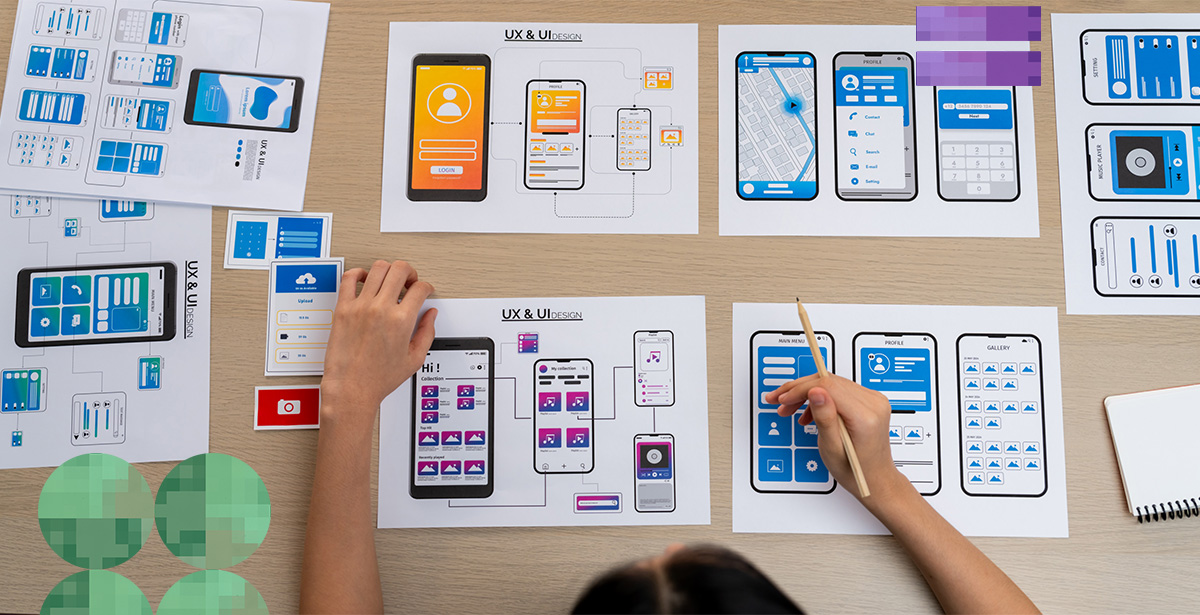7 Shopify Custom App Development Myths That Compromise End Results

Shopify custom app development isn’t slowing down – a fact confirmed by the 40–90 new apps added to the store weekly.
However, before venturing into unknown territory, you need to stay away from misconceptions that can impact the overall outcome. Without the right tech partner, the following seven myths can prevent you from getting the most value from your app.
Myth 1) If You Build It, They Will Come
Just because you built a custom Shopify app doesn’t mean people will download and use it. The process of creating an app is just one step in a much larger journey toward success.
To ensure that your Shopify custom app development efforts don’t go to waste, you need to ensure app downloads. For that, here are some highly effective tips.
- Develop a robust app store optimization (ASO) strategy to boost app visibility and organic traffic.
- Utilize compelling visuals and engaging app descriptions to attract potential users.
- Leverage social media channels and targeted advertising for broader reach and user acquisition.
- Implement referral programs and incentivize users to promote your Shopify app within their networks.
- Gather and respond to user feedback to continuously improve your app’s functionality and user experience.
- Offer limited-time promotions or exclusive content to encourage immediate downloads and usage.
- Foster positive reviews and ratings by providing exceptional customer service and support.
- Shopify custom app development isn’t a one-time thing. So, regularly update your app with new features and improvements to engage and retain users.
Myth 2) Shopify App Users Are Always “On the Go”
Most Shopify store owners and app developers are under the impression that mobile users primarily use their devices hurriedly. However, this isn’t always the case as mobile usage patterns vary significantly.
Yes – many users do engage with their mobile devices on the go. Yet others frequently use them during leisure time, at home, or in stationary settings.
So, by falling for this myth, you may overlook the diverse ways in which people integrate mobile technology into their daily lives. This, in turn, impacts your app’s user experience and may lead to missed opportunities.
What you need to do is learn about and thoroughly understand your users’ habits. Normally, this step is initiated before the Shopify custom app development process. However, it’s never too late to take it.
Based on the data of when and how your app is used, you can create personas and user journey maps. With the right Shopify app development services provider, all of this can be made easier.
Myth 3) The Best UI Is No UI
Unfortunately, some of the most experience user interface (UI) designers tend to preach this. However, what’s the use of taking the Shopify custom app development route if you’re going for ultra simplistic designs?
Design is essential to enhance the overall user experience, tailor functionalities to business needs, and provide a unique interface.
Further, custom designs can differentiate your store, improve brand perception, increase user engagement, and streamline the shopping process. As a result, you’ll get higher conversions and customer satisfaction.
Additionally, a well-designed custom app can facilitate easier navigation, improve visual appeal, and promote a seamless and intuitive user interface. This, in turn, fosters trust and loyalty among customers.
In short, you can’t compromise on design or opt for simple, invisible UI. Instead, find a designer who understands that minimalism isn’t a synonym for simplicity.
They should know which visual elements to incorporate and what to remove without adding complexity. After all, your app shouldn’t put users through a learning curve.
Myth 4) Creating a Prototype Is a Waste of Time
There’s just so much to write on this myth because it has the strongest hold on developers’ and business owners’ minds.
Common Assumptions on Prototyping Shopify Apps
Unfortunately, prototypes have fallen from grace as people believe the following –
- There’s no need for a prototype when you’re clear on product requirements.
- Wireframes displaying information architecture are just as effective.
- Prototypes won’t benefit the Shopify custom app development team as they’re a design tool.
- A lot of money and time will go into creating prototypes, especially since they’re lifelike.
- Users interact differently with prototypes compared to actual products.
The True Importance of Prototypes
Forget what you’ve heard about prototypes. These tools are important for the Shopify custom app development process because they help with the following.
- Visualization and Conceptualization – Prototypes help visualize and conceptualize an app’s layout, structure, and functionalities.
- User Feedback and Testing – Prototypes facilitate early-stage user testing, enabling developers to gather valuable feedback from potential users and stakeholders. This, in turn, helps them refine and improve the app’s design and functionality.
- Error Identification and Resolution – This tool can identify potential design flaws and usability issues early in the development process. That way, you can make timely fixes and minimize the risk of costly errors in the final product.
- Cost and Time Efficiency – Creating prototypes can save time and resources by enabling teams to identify and address issues early. As a result, there won’t be a need for major design changes and code rewrites later on.
- Stakeholder Alignment – Prototypes serve as effective communication tools. They facilitate better understanding and alignment among stakeholders, designers, and developers on everything related to the app.
Myth 5) If No Wi-Fi, App Users Will Use Data to Stay Connected
During Shopify custom app development, never make the assumption that users are always connected to the internet. Your app should be able to run effectively over slow or intermittent connectivity.
So, consider designing your app and optimizing it to work in any environment. You should also opt for fast loading, i.e. minimizing page size by reducing images and weighty content.
When designing apps for limited connectivity, consider the following tips –
- Focus on core functionalities that can operate offline.
- Implement offline storage to allow users to access and modify data locally. They can sync data when connectivity is restored.
- Minimize data consumption by using compressed files and efficient data transfer protocols.
- Provide clear offline indicators to notify users when the app is working offline. This will help manage expectations.
- Enable partial content loading to display partial data or cached content. Doing so will provide users with a seamless experience.
- Design simple, intuitive interfaces that facilitate easy navigation and minimize data usage.
- Enable data sync prompts to inform users when the app is ready to sync data.
- Conduct thorough testing in simulated or real limited connectivity scenarios to identify and resolve potential issues.
Myth 6) The Fewer/More Features You Add, the Better
There seems to be no consensus on whether fewer or more features is the best way to go.
Some propose fewer features since mobile apps aren’t the same as desktop apps. On the other hand, others believe more features offer more value to users.
The truth is, the mobile user experience shouldn’t be limited to fewer features. Instead, you should create a more focused experience that takes into consideration what users do on their devices.
As for more features, they won’t necessarily add value for users. In fact, it may backfire since it adds complexity to the interface and impacts the app’s overall quality. All while increasing your time-to-market.
That’s why you always need to have a plan for Shopify custom app development. This is formulated after extensive research on your target market and their demands. Not to mention hiring a team of experienced eCommerce app developers who know what’s on trend.
Moreover, a prototype or minimum viable product (MVP) can help determine which features to launch and which ones to roll out later.
So, instead of worrying about more or less, play it smart with the just right number. You’ll know what that number is after thorough research and testing.
Myth 7) Don’t Test till after Launching Your Shopify Custom App
Many believe that users will test their apps and provide feedback to help improve them. Unfortunately, this belief means wasting every hour and dollar they invest in Shopify custom app development.
You can’t just assume that users will happily test your app and report areas of improvement. The minute people face a problem, they may become frustrated and ultimately abandon your app altogether.
Delaying testing will also inconvenience you and your team. After all, you’ll need to rework some parts later on. This can also be annoying for the Shopify custom app development and design teams as well.
So, test early and often. By choosing teams that follow Agile, this is possible as testing and quality is ingrained in the development method.
Ready to Tackle Shopify Custom App Development the Right Way?
By avoiding these seven myths, you can eliminate many factors affecting the success of your app.
However, if you really want to get everything right the first time, get in touch with us via the contact form below. Our Shopify mobile app development experts will take care of everything related to your app.





